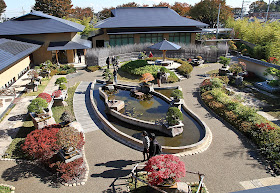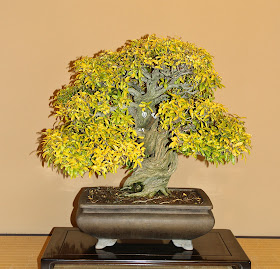Peoples most favorite Bonsai this year was the Juniper and most sell able tree, number one exporter this year was Japan followed by China. Though China is slowly overtaking Japan in number of Bonsai exports.
Checking through jungles of websites to detect authentic Bonsai online stores is not easy. The usual thing when buying online are the shipping costs. Some popular Bonsai retailers do not ship internationally and those that do are inevitably more expensive. Nevertheless, it's worth checking and perhaps get in contact with them directly and see if the retailers are willing to compromise. At the end of the day, we are all out there looking for the best and affordable Bonsai. You may find a dramatic difference in prices between Seeds, pre-Bonsai and Bonsai. Having said that, it would be easier and more convenient to start your passion with a pre-Bonsai. Please refer to my blog post on different tree species that will help you to detect the right Bonsai that matches your environment. Some tree types suit better to tropical environment whereas others like the Juniper for example, thrive in a non tropical environment. Therefore, its always good to check these matters in details before purchasing.
stores is not easy. The usual thing when buying online are the shipping costs. Some popular Bonsai retailers do not ship internationally and those that do are inevitably more expensive. Nevertheless, it's worth checking and perhaps get in contact with them directly and see if the retailers are willing to compromise. At the end of the day, we are all out there looking for the best and affordable Bonsai. You may find a dramatic difference in prices between Seeds, pre-Bonsai and Bonsai. Having said that, it would be easier and more convenient to start your passion with a pre-Bonsai. Please refer to my blog post on different tree species that will help you to detect the right Bonsai that matches your environment. Some tree types suit better to tropical environment whereas others like the Juniper for example, thrive in a non tropical environment. Therefore, its always good to check these matters in details before purchasing.
Here a small guide on Bonsai Online shops:
http://www.j-bonsai.com/ is a famous online website from Yoshihiro Nakamizu, he is been in the business for decades, and besides teaching and educating students, he offers Bonsai artworks online.
http://www.bonsaiboy.com/ Online store from New York, they grow a huge assortment of Bonsai trees. Although I have never purchased directly from them, it's worth checking. Please note that they do not ship internationally, US only.
http://www.kaizenbonsai.com Another fantastic online shop, Graham is very popular on YouTube. The way he wires and shapes Bonsai in his workshop is simply remarkable. Another good point is that they ship worldwide.
http://www.bonsaioutlet.com/ The most popular online store website in the US. They sell all kinds of Bonsai sizes and accessories. They ship to the US only and not internationally. Very competitive pricing and fast delivery.
http://www.j-bonsai.com/ is a famous online website from Yoshihiro Nakamizu, he is been in the business for decades, and besides teaching and educating students, he offers Bonsai artworks online.
http://www.bonsaiboy.com/ Online store from New York, they grow a huge assortment of Bonsai trees. Although I have never purchased directly from them, it's worth checking. Please note that they do not ship internationally, US only.
http://www.kaizenbonsai.com Another fantastic online shop, Graham is very popular on YouTube. The way he wires and shapes Bonsai in his workshop is simply remarkable. Another good point is that they ship worldwide.
http://www.bonsaioutlet.com/ The most popular online store website in the US. They sell all kinds of Bonsai sizes and accessories. They ship to the US only and not internationally. Very competitive pricing and fast delivery.
http://www.aliexpress.com Aliexpress sells various types of Bonsai seeds. Sometimes it also offers Pre-Bonsai that have already been wired and styled. The good part of AliExpress is that it ships worldwide.
And if you still haven't found your Bonsai, then try on YouTube, artists are often very helpful to introduce you to the right counterpart. Most of them do it out of passion and not necessarily to make a living. Good luck!
And if you still haven't found your Bonsai, then try on YouTube, artists are often very helpful to introduce you to the right counterpart. Most of them do it out of passion and not necessarily to make a living. Good luck!
 Japanese Av Star
Japanese Av Star






